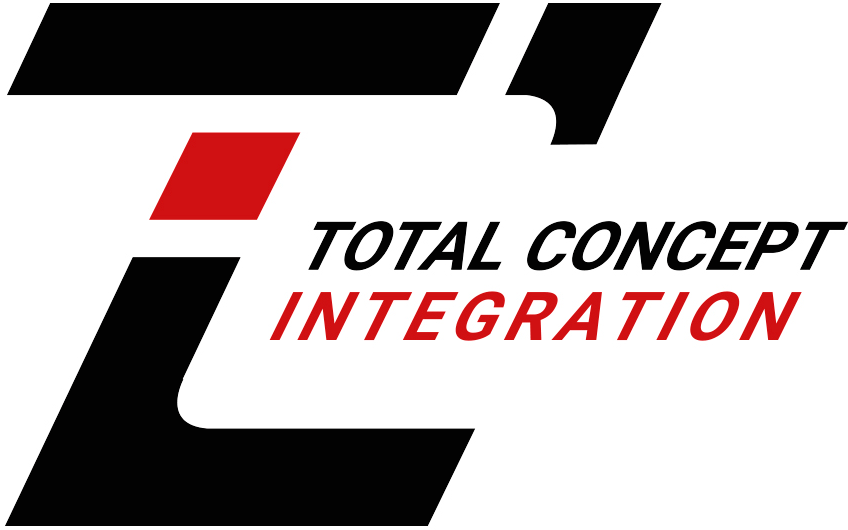A Guide to Digital Signage Screens & Advertising Displays
Digital signage displays are available in numerous types, styles, and sizes. Many top brands offer commercial-grade solutions that can support applications ranging from interactive displays in stores to corporate conference room equipment, to digital restaurant menus. The options can be overwhelming, but Total Concept Integration is here to help you decide on the best products for your business. We’ve helped some of the largest well-known enterprises obtain solutions that support any application or level of demand.
If you’re looking for a digital signage display, you’ve come to the right place.
What Is a Digital Signage/Ad Display?
A digital display is an electronic hardware component. It may be an LCD screen, an LED screen, or a projection system that can display a range of content. This content may originate from video cameras, digital files, or streaming media.
You can find digital signage in just about any type of public space, including retail stores, transportation hubs, restaurants, museums, and hotels. A digital display may serve marketing and advertising purposes or support functions such as exhibitions or wayfinding. It can display virtually any type of content.
When you are looking to procure digital signage equipment, it’s important to think about the type of products that you need, how many displays are required, and the timeline for deployment. A content strategy is also needed, and you must carefully consider your budget. In this article, we’ll cover some of the best digital signage screens and ad displays currently on the market, so your corporation can make informed decisions.
Types of Digital Signage Displays on the Market
The right display offers many settings to broadcast your content. It can increase brand recognition through text, images, video, live feeds, and internet content, including web pages. You can engage customers and keep employees informed. Are you searching for the perfect solution for one, a few, or all of these applications? Here are some of the best displays that can meet your digital signage requirements:
Direct-Lit LED Commercial Displays
Although more expensive than LCD systems, LED displays have a lower cost of ownership over their operating life and are well-suited for use in public spaces. You’ll find them in retail stores, hotel lobbies, and conference rooms as well as large arenas and other event venues. They’re both slim and sleek, accommodating a variety of business applications, and they can run 24/7, thanks to advanced electronics and cooling technology.
Flexible configuration is another advantage. These displays can be run in landscape or portrait modes, and images are bright and crisp regardless of the ambient light level, including direct sunlight. Brightness is measured in candelas per square meter (cd/m2); a commercial LED display can offer up to 2,400 cd/m2, compared to a consumer TV that only offers about 350 cd/m2.1
Depending on the product, you may find features such as:
- Remote Management: RS232 and RJ45 connectors to manage multiple screens remotely.
- Tamper-Resistance: Unauthorized users are blocked by IR and remote lockout functions.
- Connectivity: Expanded content options with support for VGA, HDMI, DVI, and other inputs.
Other perks may include a multitude of size options and choice of display configurations, including standalone, in-window, and enclosed designs.
Large Format Commercial LCD Displays
Liquid crystal display (LCD) technology is highly versatile and can be used indoors and outdoors. Commercial large format LCD systems are typically found in a range of standard sizes. An LCD screen is structured in layers, starting with an illuminated base layer (sometimes backlit by LEDs), topped by an LCD sheet (two plates surrounding a liquid), and a protective glass layer that is used to protect outdoor displays against weather, vandalism, and other elements.
A commercial LCD display is extremely rugged and has exceptional clarity and resolution. You can find one in Full-HD (1080p) up to Ultra-HD (4K) resolution with four times the pixels. For a 98-inch screen, this means you’ll start to see pixels at 13 feet away. At 4K, you’d have to be within seven feet for pixels to be visible. Increased pixel density is another benefit, although this contributes to increased cost. However, an LCD screen is typically lower in price than a Direct View LED.
Video walls are often created with large format commercial LCD displays. The bezels around the display makes wall-mounting more feasible. Although these LCD systems possess exceptional quality, the best type of screen depends on your project’s specifications and objectives.
Commercial Floor Standing Digital Signage and Interactive Display Totems
Free-standing digital signage displays are available in a diverse array of styles and configurations. Most often, they include an LED monitor, floor stand, and integrated content management software. They’re more versatile than wall-mounted screens, as placement can be essentially anywhere that’s demanded by the application.
The choices of floor stands are many. You’ll find options such as aluminum stands with anodized finishes and powder-coated heavy-duty steel stands. Technological elements such as Wi-Fi connectivity contribute to versatility as well. Dynamic multimedia content can be delivered from office equipment located anywhere and ad campaigns can be scheduled and managed this way too.
Floor standing displays and totem kiosks can be used to create interactive digital signage, wayfinding solutions, and electronic restaurant menus. A computer kiosk can also be used as a self-service terminal for contactless payment, check-in, and other visitor management functions. Their touchscreens can display interactive product/service catalogs. Kiosks may serve the leisure and entertainment sector as well.
4K Ultra HD Commercial Displays
4K Ultra High Definition displays are typically used in a business environment. Content control is more tightly managed with Public Mode lockout functions. That means displays can be mounted in public spaces but only authorized individuals can access channel, volume, lighting, input source, and other remote control functions, as well as the content displayed.
These commercial displays also have an expanded set of connections. While consumer models may use only HDMI and/or USB, these commercial units have LAN and RS-232C ports. They support a diverse set of commands so that connected devices can be used to control the display remotely. Also, a more powerful cooling system protects the display during a greater number of daily operating hours.
Another disadvantage of most consumer models is that images can burn on the screen. With many 4K UltraHD commercial displays, this isn’t a problem. Newer technologies prevent image retention so you can showcase product images, artwork, or crisp, attention-grabbing content for as long as you want. While both may look similar on the outside, the features can be significantly different.
What to Look for in a Digital Signage Display
If you’re looking to invest in a signage system, it should have supportive features such as a built-in media player. This allows the display to function as a computer and provides you with a range of options. It gives you the power of a graphics processor, internal memory, and a web browser. Plus, there’s no need to invest in external peripherals to make the display fully operational.
An external media player can provide the same functionality, except for the ability to control the display remotely. An internal player is therefore best. Also look for a boot-on screen function that resumes playback when you turn on the unit; employees can run the system without programming input. They just need to turn it on for content to start playing.
Cloud-based software is also recommended. It ensures apps are up to date and accessible. If your business requires LAN connectivity, as many schools, hospitals, and public agencies do, LAN-based software offers a secure content delivery option. Also, both physical and digital security must be considered; features such as a lock on USB input is recommended so unauthorized users cannot upload content to the display.
When you are shopping around, look for a brand that offers excellent customer support. Research each company’s customer service department, using word-of-mouth, online reviews, or your own inquiries into the product to determine whether the business offers the support you need.
Why Invest in a Commercial Display?
Commercial digital signage systems are designed to run 24/7 with a higher level of brightness than consumer models. They also last longer and support higher resolutions and longer running times. Display/image quality won’t degrade as quickly, so commercial displays offer a wide range of benefits for you to take advantage of over consumer products.
Work with Total Concept Integration
For assistance with your organization’s digital signage/advertising needs, we can help find the best solutions. These include leading-brand digital signage screens we can customize based on your vision. Our LED screens offer a hi-tech design while we assist with engineering, development, and installation.
If you need help with content integration, interactive capabilities, and programming, our experienced team can assist you there too. Total Concept Integration has worked with Nike, General Motors, Microsoft, BMW, Facebook, and other high-profile clients.
Are you ready for a customized, high-end digital signage display or a series of interconnected display systems? Contact TCI, and we’ll provide all the assistance you need with top digital signage screens and advertising display systems. For more information, call 855-950-0824 today.
Source:



